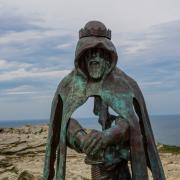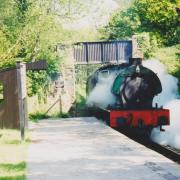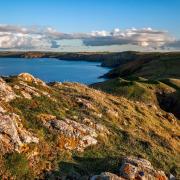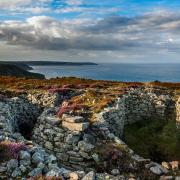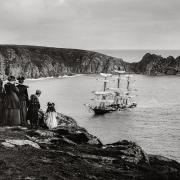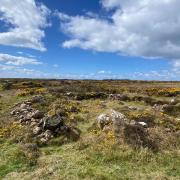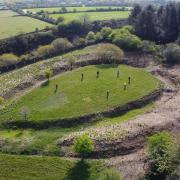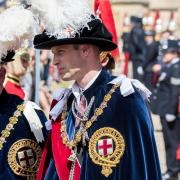Few places in Cornwall aren't drenched in a rich history and fascinating fables - and Bronn Wenneli is no different, writes Merv Davey
Brown Willy, or Bronn Wenneli as we say in Cornish, means hill of swallows and that is just what you will see sweeping across the moorland below you on a summer’s day. Bronn Wenneli is the roof top of Cornwall with clear views of the English border and Dartmoor to the east and the Clay Country and beyond to the west. It is a place of changeable mood when the wind picks up and the mists descend. The granite outcrops resonate with the wind, and it takes little imagination to hear the spectral hunt and yapping hounds that legend has haunting these moorlands. There are as many tales as there are people to tell them but two have made their mark on Bronn Wenneli.

The first concerns one Justice Tregeagle who had a fearsome reputation for handing out extreme punishments, usually hanging, for quite trivial offences. He mysteriously became the beneficiary of a large inheritances and at his death, was a very wealthy man. There was no doubt in the minds of later story tellers that his fortune was the result of a Faustian pact with the devil. Different threads of the story have him seeking to escape payback time in various ways but eventually he flees from the clutches of the devil who promptly sets the Black Hunter and his pack of hounds after him.
The story of the Hunt for Tregeagle is captured in the Ballad of the Haunted Moor. Hunting ballads are a genre of folk song that date back to the Court of Henry VIII and a balladeer called William Cornish. As well as shouts of 'Tally Ho', noble huntsmen and leaping horses these songs usually name the leading hounds of the pack. The Black Hunter is sent out by the Devil to capture Tregeagle and his hounds have the demonic names Gehenna, Sheol and Blackman’s Whelp. Tregeagle’s fate is that he is never caught and instead runs in terror from the hunt for all eternity. Listening carefully to the wind on Bronn Wenneli it is the ghostly sound of the Black Hunter’s horn you can hear together with the evil howl of his hounds and Tregeagle’s cry of terror.
Bronn Wenneli’s second story concerns one Lord Arscott of Tetcott, his manservant Black John and hounds with the less sinister names of Princess, Madcap, Ringwood and Ralley. The Arscott family came into their title and wealth in the 16th Century through means of a series of strategic marriages rather than inheritance. The story goes that you could travel from Bodmin to the border without leaving Arscott land. Although most of their lands lay in Cornwall like many wealthy landowners of their time, they choose to live along the Tamar Valley as the aftermath of the 1549 rebellion had left Cornwall very unsettled. Thus, the titular name of “Tetcott” which is just over the border from Launceston.

In more peaceful times, our Lord Arscott based himself on his estate at Pencarrow, on the edge of the moor just outside of Bodmin. He was renowned for his love of partying and hunting, and it is the Pencarrow Hunt that gives name to the ballad. One weekend he invited the good and the great to a sumptuous feast and the promise of a hunt the following day. His manservant, Black John, performed a number of duties for his master, one of which was court jester, but his party tricks were not for the faint hearted. He entertained his master’s guests by lowering live mice down his throat on a piece of string and then regurgitating them.
Black John’s primary role was master of the hounds and legend has it that he lived and ran with them. On the morning after the feast, he had his master and guests saddled up and riding across the moor by first light. As the mists cleared from Bronn Wenneli the hounds scented the fox and the chase was on. They spent the morning jumping hedges and splashing across the bogs. By lunch time the fox was headed for the North coast which seems to have provided an excuse for a visit to the Inn at Poundstock.
Suitably refreshed the hunt picked up the scent again and pursued the fox to the cliffs at Crackington Haven. Here the fox poised and found refuge in a rabbit hole. Black John recognised the danger and stopped but not in time to call in the hounds who leaped to their deaths on the rocks below, closely followed by Lord Arscott and his entourage. Such was his enthusiasm, so the legend goes, that did not notice the transition from living lord to spectral hunter and haunts the moor below Bronn Wenneli to this day.
To learn more of Pencarrow Hunt visit an-daras.com







